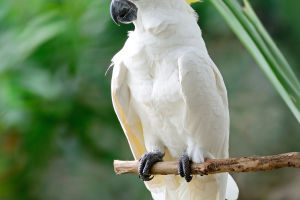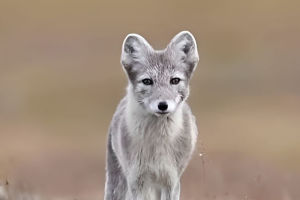The white rhinoceros is one of the heaviest herbivorous mammals in the world and a flagship species within the rhinoceros family.
This article will introduce the white rhinoceros from multiple perspectives, including its characteristics, habitat, diet, social structure, and conservation status!
1. Basic Characteristics
The white rhinoceros is the second-largest species in the family, second only to the Indian rhinoceros. A mature white rhinoceros can weigh between 1,500 and 2,500 kilograms, with a body length of 4 to 5 meters and a shoulder height of approximately 1.5 to 2 meters. Its thick, wrinkled skin is usually gray or grayish-white, hence the name white rhinoceros.
Compared to the black rhinoceros, the white rhinoceros has a distinctive feature: a wide mouth. This largemouth is better suited for grazing, and its teeth have evolved to chew large amounts of grass. The white rhinoceros's keratin horn is typically located on its nose, with males having longer horns, which can reach up to 1.5 meters.
2. Distribution
The white rhinoceros is primarily found in the southern and eastern regions of Africa. They prefer open grasslands, meadows, and sparse woodlands, often living near water sources to stay hydrated. Unfortunately, their natural habitat has been heavily impacted, with human activities such as agriculture, livestock farming, and urbanization encroaching on their territories.
Historically, the white rhinoceros had a much broader distribution, stretching from the highlands of South Africa to parts of East Africa. Today, only a few countries, including South Africa, Namibia, Kenya, and Botswana, still host populations of white rhinoceroses.
3. Diet
The white rhinoceros is primarily herbivorous, with its diet consisting mainly of grass. They can consume vast amounts of grass, especially during the rainy season when the grasslands grow rapidly. Their diet may also include shrubs and tree leaves. They typically use their wide, powerful mouths to pull grass from the ground.
Given their large size, white rhinoceroses must consume a large quantity of food to sustain their weight. They spend more than 12 hours a day foraging in the grasslands to meet their daily intake.
4. Social Structure
White rhinoceroses generally live in groups, though their social structure is relatively loose. A mature female with her calf leads a typical group, while male white rhinoceroses tend to be solitary.
Although their social interactions are limited, white rhinoceroses communicate with each other through scent, sound, and body language. For instance, male white rhinoceroses often fight to establish territory and mating rights, while females protect their calves from threats.
The white rhinoceros has a long reproductive cycle, with the female's gestation lasting about 16 to 18 months, typically giving birth to a single calf at a time. At birth, the calf weighs around 40 to 60 kilograms and is nurtured by its mother, learning survival skills as it grows.
5. Conservation Status
Once a common species on the African savannas, the white rhinoceros saw a sharp decline in numbers in the mid-20th century due to poaching and habitat loss.
However, conservation efforts have made some progress, particularly in South Africa, where the population of white rhinoceroses has begun to recover. Measures such as establishing nature reserves, increasing patrols, and raising public awareness about the importance of rhino conservation have helped improve the species' survival.
The white rhinoceros is one of the oldest species on Earth, with significant ecological value and importance for biodiversity. Despite its many challenges, conservationists worldwide continue to work towards ensuring the species' future!
Rare Baby White Rhino Takes First Steps Outside
Video by Inside Edition


